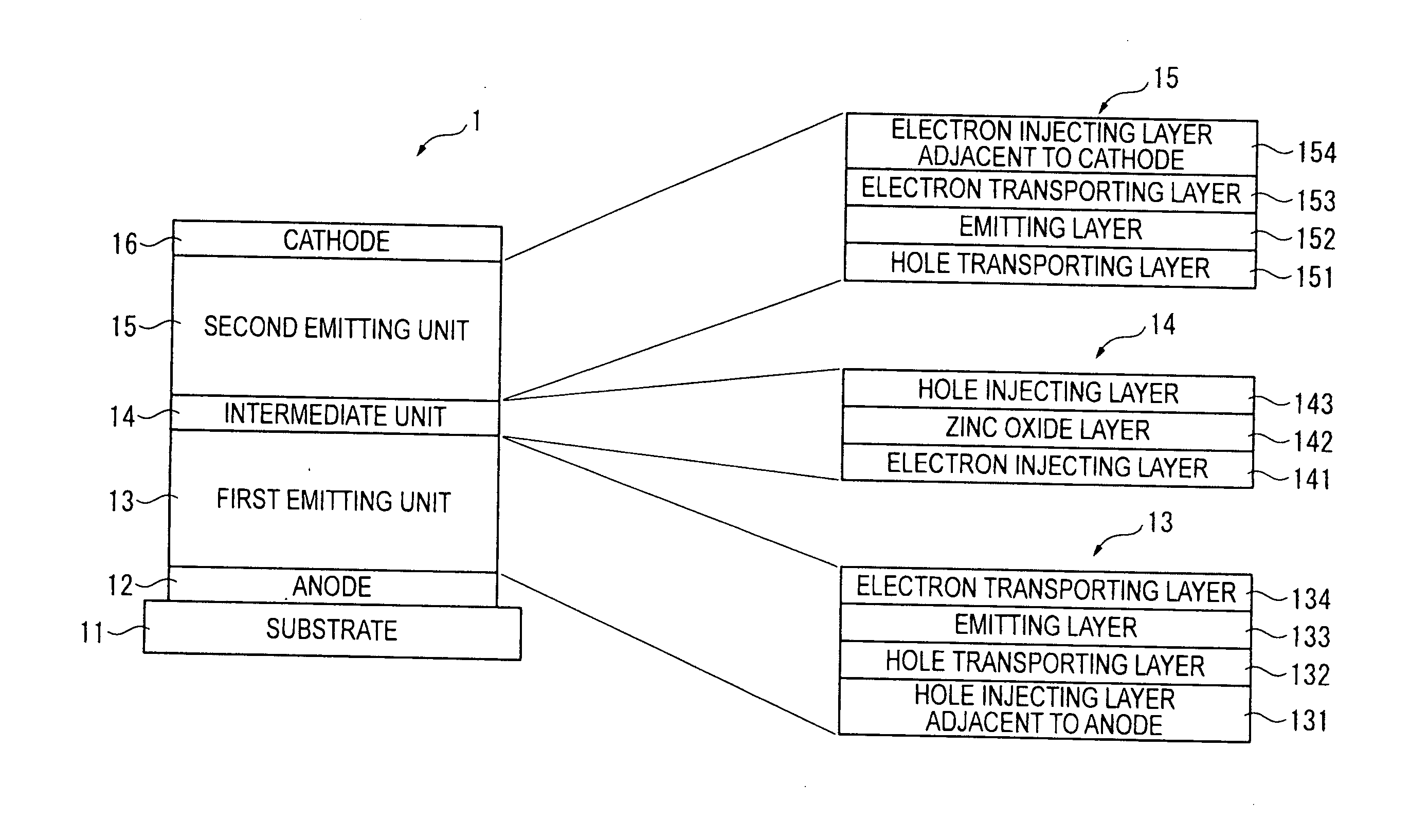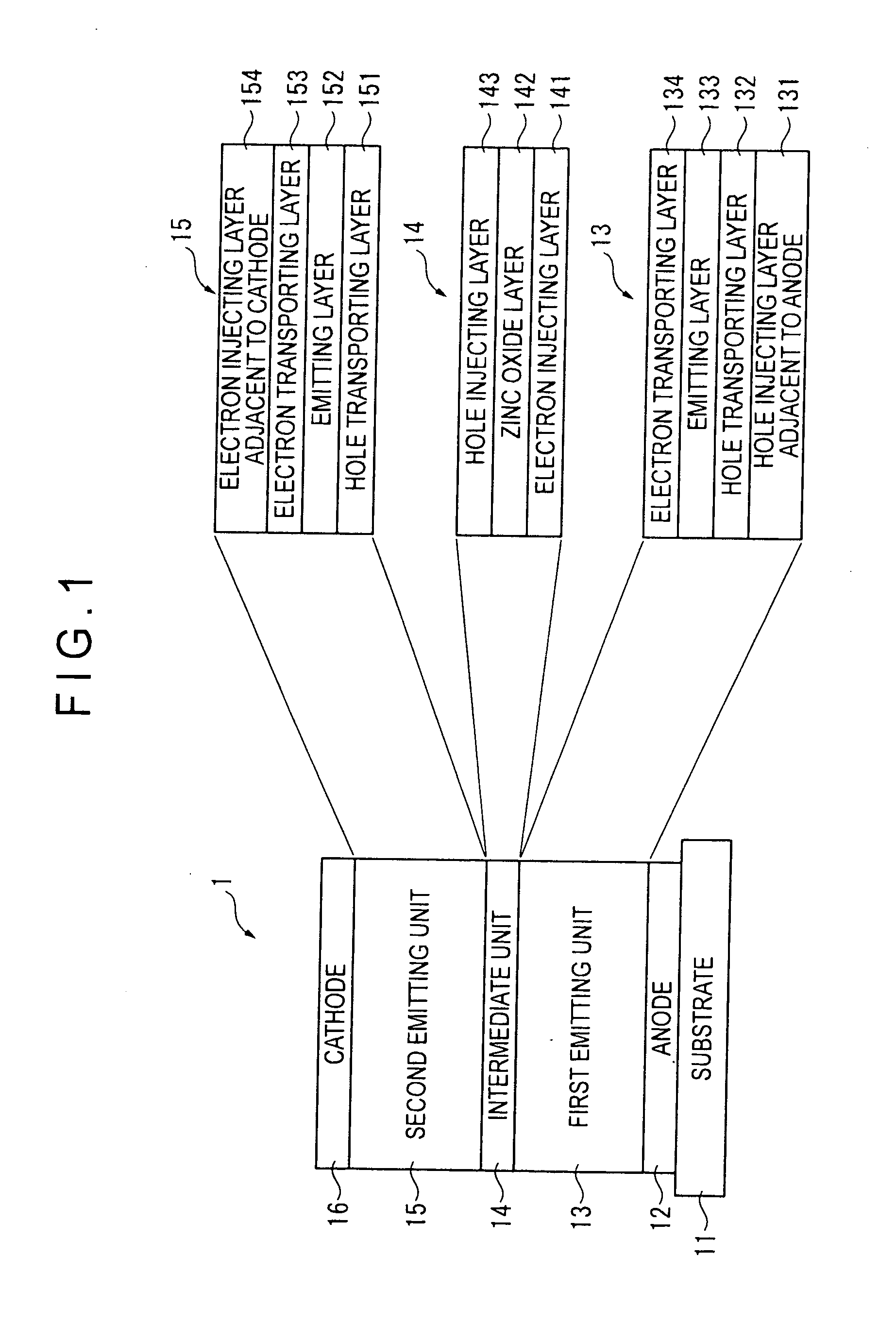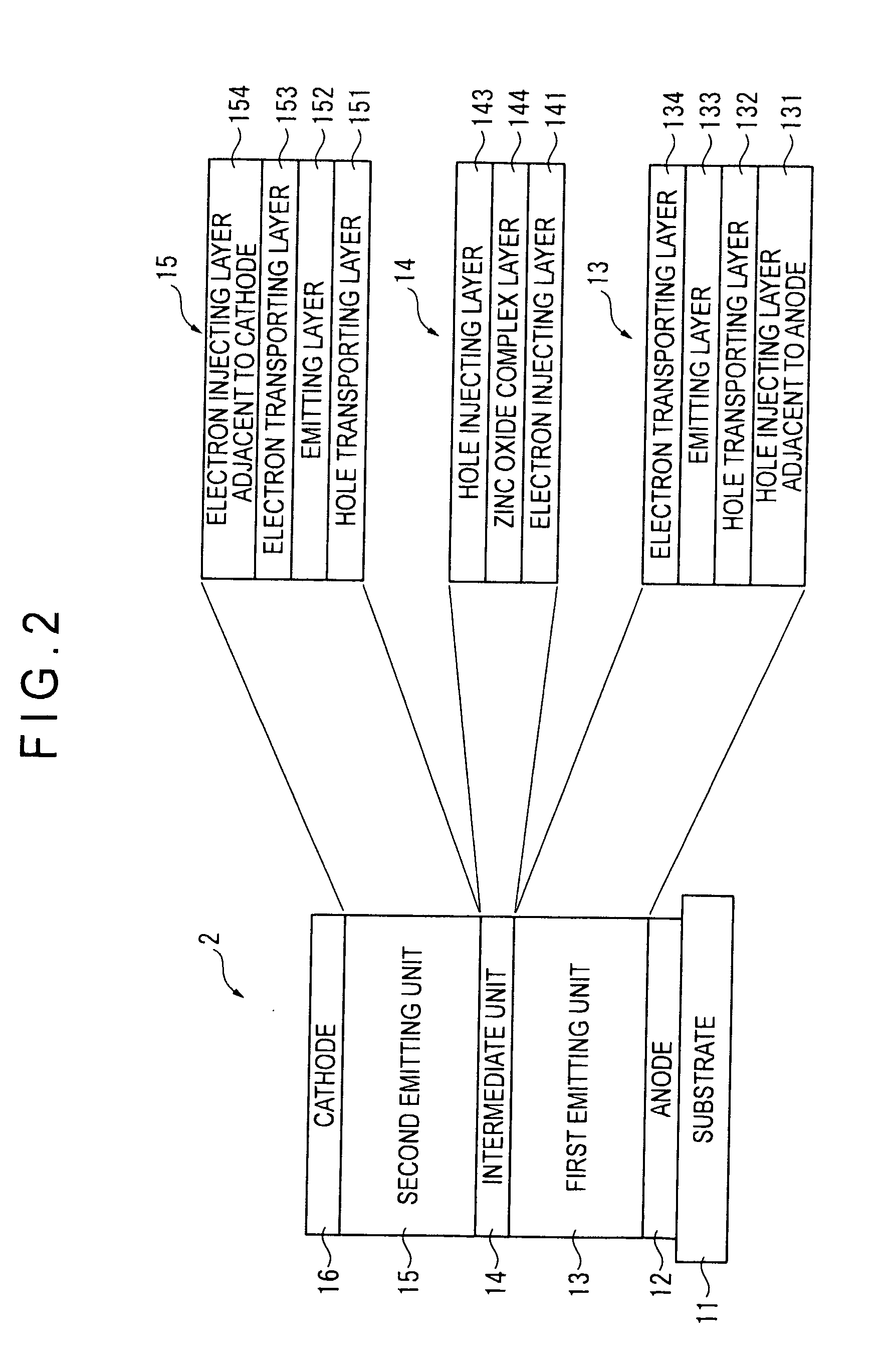Organic electroluminescence device and method for producing organic electroluminescence device
a technology of electroluminescence device and organic electroluminescence, which is applied in the direction of thermoelectric device junction material, semiconductor device, electrical apparatus, etc., can solve the problems of reducing the luminescent efficiency of the device, deteriorating the electron injecting layer of the device, and device having to be driven at a high voltage, so as to reduce the reflectivity of the zinc oxide layer and the reflectivity of the adjacent organic compound layer, the effect of preventing leakage curren
- Summary
- Abstract
- Description
- Claims
- Application Information
AI Technical Summary
Benefits of technology
Problems solved by technology
Method used
Image
Examples
first exemplary embodiment
[0052]The tandem-type organic EL device includes the plurality of emitting units, e.g., a first emitting unit and a second emitting unit, as follows:
[0053]anode / first emitting unit / intermediate unit / second emitting unit / cathode.
[0054]In the first exemplary embodiment, a tandem-type organic EL device 1 arranged as shown in FIG. 1 is exemplarily described. The organic EL device 1 is provided by laminating an anode 12, a first emitting unit 13, an intermediate unit 14, a second emitting unit 15 and a cathode 16 on a substrate 11 in this sequence. As shown in FIG. 1, the first emitting unit 13, the intermediate unit 14 and the second emitting unit 15 are respectively provided with a plurality of layers. The arrangements thereof are as follows.
[0055]The first emitting unit 13:[0056]a hole injecting layer 131 adjacent to the anode[0057]a hole transporting layer 132[0058]an emitting layer 133[0059]an electron transporting layer 134
[0060]The intermediate unit 14:[0061]an electron injecting ...
second exemplary embodiment
[0204]Next, a second exemplary embodiment is described below.
[0205]In the description of the second exemplary embodiment, the same components as those in the first exemplary embodiment are denoted by the same reference signs and names to simplify or omit an explanation of the components. In the second exemplary embodiment, the same materials and compounds as described in the first exemplary embodiment are usable.
[0206]As shown in FIG. 2, an organic EL device 2 according to the second exemplary embodiment is the same as the organic EL device 1 except that the zinc oxide layer 141 in the intermediate unit 14 of the organic EL device 1 is replaced by a zinc-containing complex oxide layer 144.
(Intermediate Unit)
[0207]The intermediate unit supplies electrons to the first emitting unit and supplies holes to the second emitting unit.
[0208]The intermediate unit includes the zinc-containing complex oxide layer, the electron injecting layer on the zinc-containing complex oxide layer near the ...
third exemplary embodiment
[0238]Next, a third exemplary embodiment is described below.
[0239]In the description of the third exemplary embodiment, the same components as those in the first exemplary embodiment are denoted by the same reference signs and names to simplify or omit an explanation of the components. In the third exemplary embodiment, the same materials and compounds as described in the first exemplary embodiment are usable.
[0240]As shown in FIG. 3, an organic EL device 3 according to the third exemplary embodiment, includes three emitting units and two intermediate units.
[0241]The organic EL device 3 is provided by laminating the anode 12, the first emitting unit 13, a first intermediate unit 14A, the second emitting unit 15, a second intermediate unit 14B, a third emitting unit 17 and the cathode 16 on the substrate 11 in this sequence.
[0242]The first emitting unit 13 and the second emitting unit 15 in the third exemplary embodiment is essentially the same as those in the first exemplary embodim...
PUM
 Login to View More
Login to View More Abstract
Description
Claims
Application Information
 Login to View More
Login to View More - R&D
- Intellectual Property
- Life Sciences
- Materials
- Tech Scout
- Unparalleled Data Quality
- Higher Quality Content
- 60% Fewer Hallucinations
Browse by: Latest US Patents, China's latest patents, Technical Efficacy Thesaurus, Application Domain, Technology Topic, Popular Technical Reports.
© 2025 PatSnap. All rights reserved.Legal|Privacy policy|Modern Slavery Act Transparency Statement|Sitemap|About US| Contact US: help@patsnap.com



